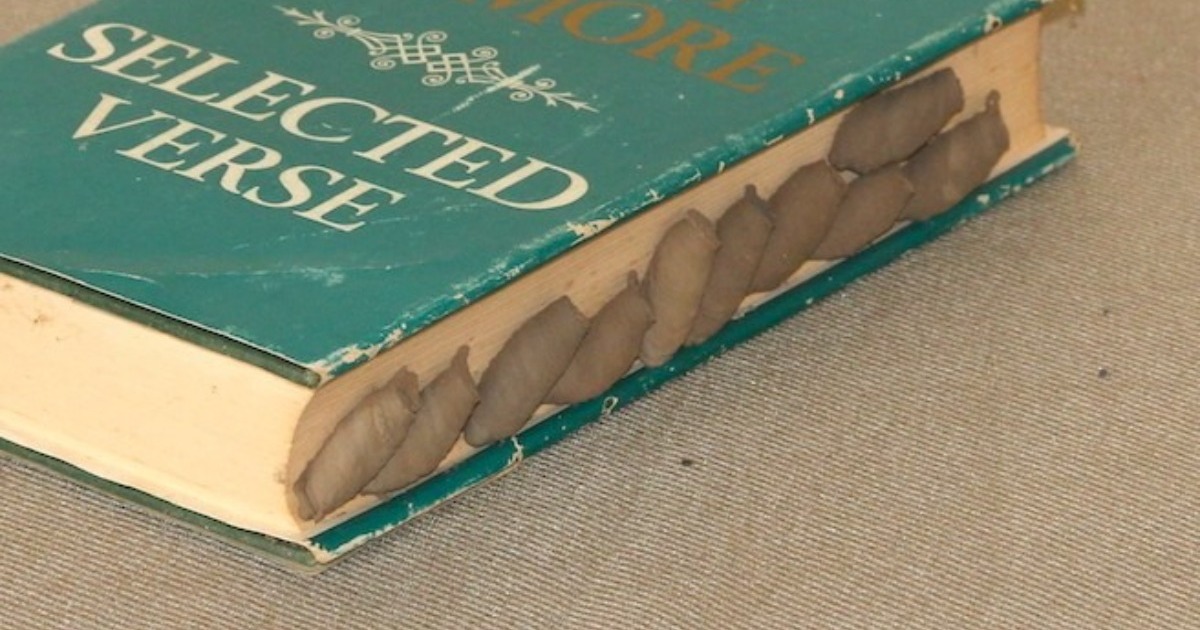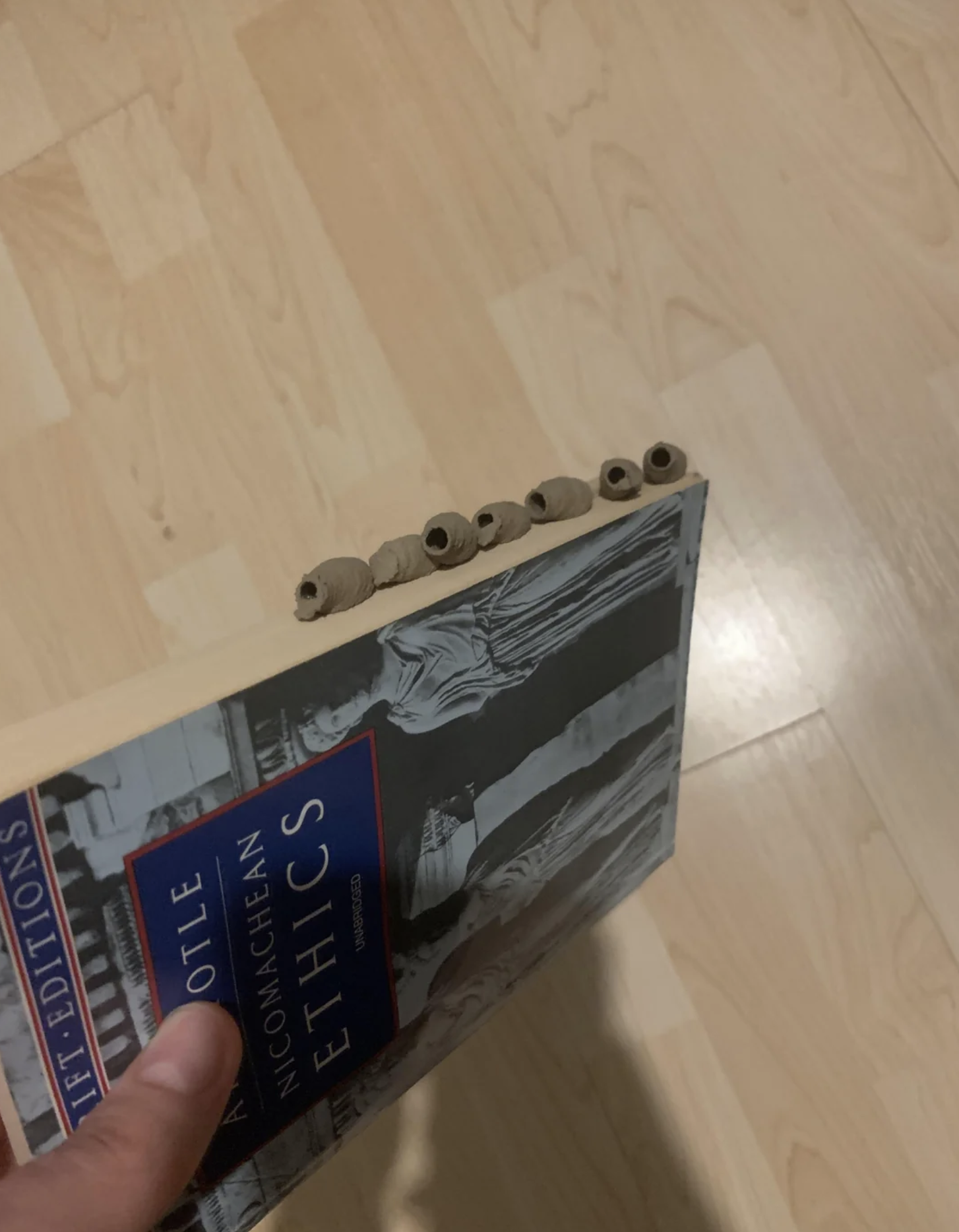A Strange Throwback Discovery

Source: Malcolm Tattersall
A recently forgotten Nicomachean Ethics book had a nice surprise: a row of orderly mud dauber nests attached to its spine. The book had been leaning against a wall, making it the perfect place for the wasps to nest and create mud dauber wasp nests.
Mud dauber wasps are solitary builders. They construct small, tube-shaped chambers with mud which they collected, hiding in areas that are undisturbed—garages, attics, or peaceful bookshelves. The mud dauber wasp nests themselves aren’t random at all—each one has a purpose.
Inside the Mud Tubes
Each chamber had a paralyzed spider or insect and a single egg. When the larva hatches, it consumes the insect stored and then emerges through a tiny hole. The dry and hollow nature of the mud dauber wasp nests indicated that the adults had emerged.

Quiet Builders Not Aggressors
Mud daubers do not defend their nests and sting occasionally. Unlike social wasps, they work independently focusing on nest building and hunting. They are part of the natural pest control service by targeting spiders. Moreover, these mud dauber wasp nests serve as an example of how nature efficiently uses space.
For indoor nests:
- Check for holes. Open tubes mean they are gone.
- Gently remove. Scrape nests and discard outdoors.
- Seal off quiet spaces. Prevent them going back by reducing stealthy areas.
When Nature Reclaims the Quiet
A mud dauber on a philosophy book teaches how easily nature uses human hiding spots. A quiet corner becomes shelter with cleverly placed mud dauber wasp nests. A dirty book becomes a nursery.

A small discovery like this, causes even more nostalgia. It represents times when the natural world and everyday life converged more frequently—backyard bug hunts, summer afternoons at the tomblike shed behind the garage, a mystery cocoon behind a curtain.
In the quiet corners of the memory and on the shelves—the good old days are still here—with the occasional wasp’s humble abode.